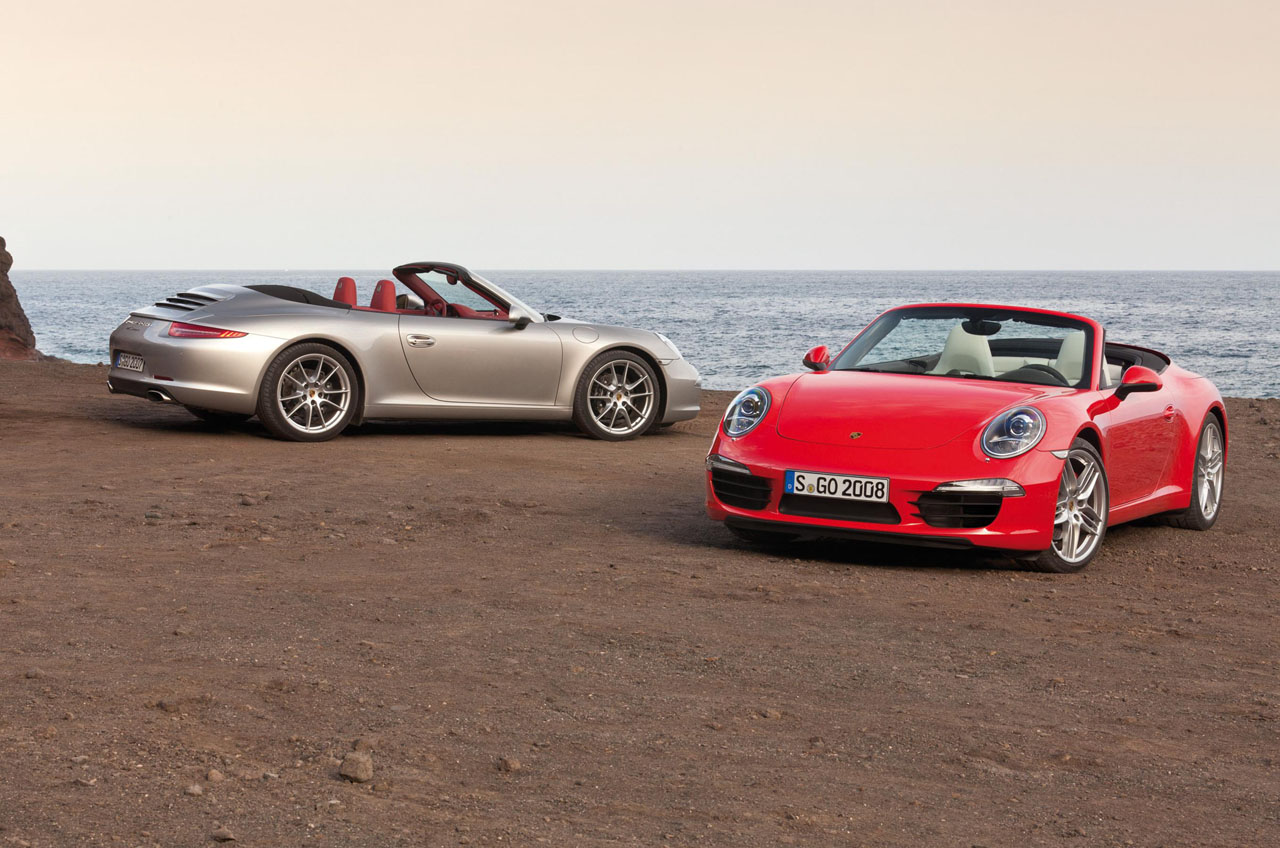Today, Porsche unveiled the Cabriolet version of the 911. Porsche says the 911 Cabriolet is lighter than it's predecessor thanks to use of lightweight materials, including canvas, magnesium, and advanced high-strength steel. The Cabriolet is also wider and longer than it's predecessor. Porsche points out the 911 Cabriolet “preserves the typically sleek 911 coupe roof line.” due to a unique roof mechanism.
Power for the 911 Cabriolet comes in the forms of a 3.4L direct-injection flat-six engine making 350 HP, 0-60 time of 4.4 seconds and a top speed of 177 mph for the base Carrera and a 3.8L boxer six making 400 HP, 0-60 time of 4.1 seconds and a top speed of 187 mph for the Carrera S. A seven speed manual and seven speed PDK dual-clutch transmission are available for both.
Prices for the 911 Cabriolet start at $98,250 for the base Carrera and $108,950 for the Carrera S.

Press Release is on Page 2
All-New Porsche 911 Cabriolet Features Innovative Roof Design
- Next-generation open-air 911 launches next spring, silhouette matches coupe
ATLANTA – November 22, 2011 – Porsche is introducing two new cabriolet versions of the recently unveiled seventh-generation 911 Carrera. These new models, the 911 Carrera Cabriolet and 911 Carrera S Cabriolet, will go on sale in the United States in the spring of 2012.
Like the coupe, the 2012 911 Carrera cabriolet features innovative aluminum-steel construction with the addition of an all-new convertible top design, which preserves the typically sleek 911 coupe roof line. Intelligent lightweight design that includes extensive use of aluminum, magnesium and advanced high strength steel ensures lower vehicle mass and lower fuel consumption while offering improved driving dynamics and additional comfort. As with the 911 coupe models, the new Porsche open-top models are significantly lighter than their predecessors.
The new 911 Carrera cabriolet can accelerate from 0-60 in as little as 4.4 seconds and achieve a top-track-speed of 177 mph, while the 911 Carrera S cabriolet can reach 60 mph in as little as 4.1 seconds and has a top-track-speed of 187 mph.
Each of the two new cabriolets uses the same engine as their coupe equivalents. The rear of the 911 Carrera houses a 3.4 liter boxer six-cylinder engine with direct fuel injection (DFI) generating 350 horsepower (hp), driving the rear wheels through a standard seven speed manual transmission or an optional PDK dual-clutch automated manual transmission. The open-top Carrera S comes with a 3.8- liter boxer six-cylinder DFI engine developing 400 hp. The open-top 911s are significantly more efficient than their predecessors; both models consume less than 10 L/100 km on the New European Driving Cycle (NEDC). U.S. Environmental Protection Agency (EPA) figures will be available closer to the on-sale date.
With the longer wheelbase, wider front track and host of new features just introduced on the 911 Carrera and Carrera S models, the new cabriolet variants offer sportier driving characteristics, greater precision and agility and increased efficiency.
On sale in the spring of 2012, the 911 Carrera Cabriolet MSRP is $93,700, while the 911 Carrera S Cabriolet MSRP begins at $108,000.






-3707742431.jpg.06edf8e14f4ccf35c60d4774a543cc11.jpg)



Recommended Comments
Join the conversation
You can post now and register later. If you have an account, sign in now to post with your account.
Note: Your post will require moderator approval before it will be visible.